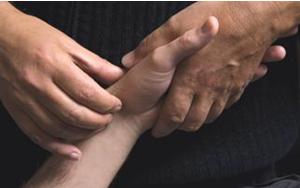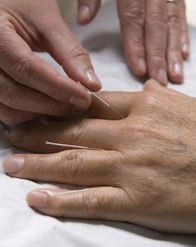Acupuncture
Acupuncture as a system of medicine
Acupuncture, along with Chinese herbal medicine, Chinese massage (Tui Na) and exercise therapy (Qi Gong), is one of the components of Traditional Chinese Medicine (TCM), a complete system of medicine with a recorded history of over 2000 years.Traditional Chinese Medicine fundamentally differs from Western medicine in its understanding of the human body and its approach to diagnosing and treating illnesses. Western medicine takes a mechanistic view of the body in which different organs are viewed as each performing an individual and self-contained function, much like the separate components within a machine, and consequently its treatments target individual symptoms largely in isolation. By contrast, Traditional Chinese Medicine views the body as an integrated system, and diseases as manifestations of imbalances within that system. Therefore Traditional Chinese Medicine treatments aim primarily at restoring and maintaining balance and harmony within the body.
Acupuncture origins
Acupuncture, and Traditional Chinese Medicine in general, are rooted in Taoist philosophy. Although acupuncture practice dates from much earlier, with evidence of stone and later of bronze, silver and gold needles having been used, the earliest known medical acupuncture text is Huang Di Nei Jing (The Yellow Emperor Classic of Internal Medicine), dated around 300 BC. Acupuncture practice gradually evolved and was refined over the centuries, however that text still provides the theoretical foundation for modern practise.In China today acupuncture is routinely used in hospitals alongside Western medicine to treat both acute and chronic cases, and is subject to a national policy of extensive clinical research.
What can acupuncture treat?
Western-style or medical acupuncture, as practised by doctors and physiotherapists, is a recent development based on Western medical diagnosis. It uses a limited range of techniques and is primarily focused on pain relief.Traditional acupuncture, as practised by members of the British Acupuncture Council (BAcC), employs the full range of diagnostic and treatment techniques developed over more than two millennia. By treating the person as a whole, acupuncture can effectively address the root causes of a wide range of both acute and chronic conditions, as well as benefiting the overall well being of the patient. Conditions that can be treated by traditional acupuncture include:
- Digestive disorders
- High blood pressure
- Menstrual and gynaecological problems
- Asthma
- Infertility
- Skin diseases
- Depression and other emotional problems
- Chronic fatigue
- Muscular-skeletal problems
Diagnosis
Since the basic principle of acupuncture is to restore and maintain the balance of the entire organism, diagnosis has to account for the condition of the whole person rather than just rely on information about specific individual symptoms.The first step in assessing your overall condition involves taking your "case". This is generally done by means of an extensive interview, and for this reason the first consultation may take longer than subsequent sessions.

The acupuncturist will then examine your tongue and take your pulse. Pulse taking is very different from the taking of the arterial pulse by a Western doctor. Pulses are felt in both wrists, and their quality, rhythm and strength are all significant as they help assess the flow of energy within your body. Tongue examination is visual and is also an important diagnostic tool. The structure, colour and coating of different areas of your tongue provide an in-depth insight into your physical health.
Treatment
Acupuncture works on the principle that stimulation of specific areas, or acupuncture points, on or beneath the skin affects the functioning of specific organs. There are several hundreds acupuncture points on the body, and their location may not be close to that of the organs they affect. Typically four to six different points may be used in one treatment session. During a course of treatment different points may be used in different sessions as your condition changes.Acupuncture needles are fine and solid, rather than hollow like those used for injections or blood tests, to which they bear little resemblance. When a needle is inserted you may feel a tingling or dull ache sensation. Depending on the required effect, needles can be inserted and withdrawn immediately, or may be left in place for about twenty minutes. It is not uncommon to experience a pleasant feeling of relaxation during treatment. The duration of a course of treatment varies depending on the individual and the conditions being treated. The frequency of treatment sessions also varies, and may change within the same treatment course, often with more frequent sessions in the early stages.



